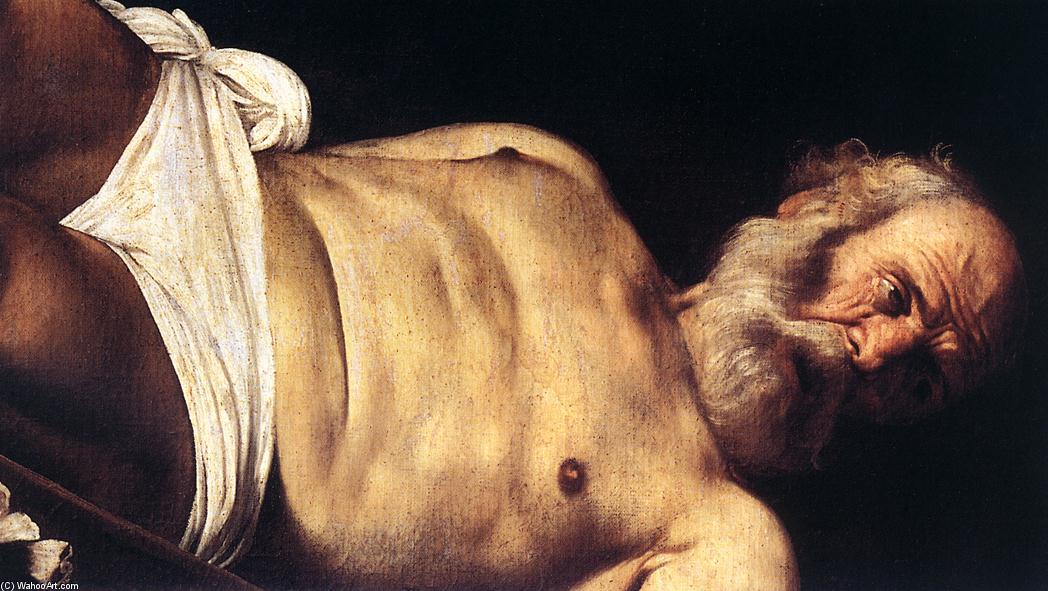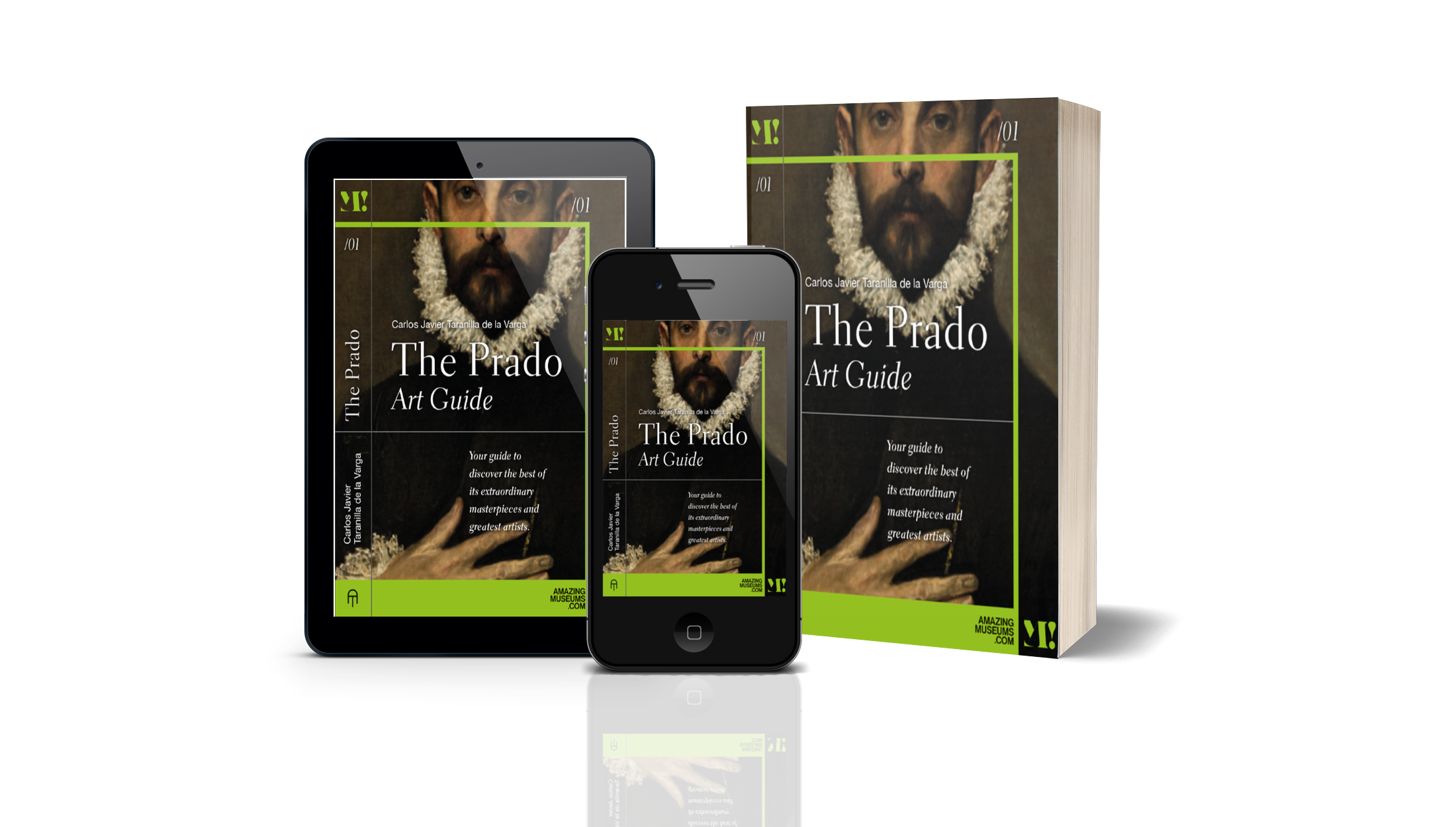
Caravaggio, scandals and secrets behind "The Crucifixion of St. Peter".
Michelangelo Merisi, known as Caravaggio, was one of the most important painters of the 16th century and one of the foremost exponents of the Italian Baroque. His life was marked by scandal and violence, and his work has been the subject of controversy from his time to the present day. One of Caravaggio's most famous and controversial works is "The Crucifixion of Saint Peter", which has generated diverse and critical interpretations of both its content and form.
Criticism of "The Crucifixion of St. Peter"
The work shows Saint Peter crucified upside down, which was considered a particularly humiliating form of punishment at the time. This image provoked great controversy, as some religious people considered it to be disrespectful to the figure of Saint Peter and the church in general. In addition, the painting also contains details that suggest a possible homosexuality on the part of Saint Peter, which has led to a variety of interpretations and has been the subject of debate among critics.
One of the main arguments for this interpretation is based on the position in which Caravaggio depicts Saint Peter crucified, face down rather than face up, which was the traditional position in which the crucifixion was depicted. At the time the work was created, face-down crucifixion was considered a particularly humiliating form of punishment, and some have interpreted this choice as a reference to sexual role reversal, which was also considered taboo at the time.
In addition, it has been noted that the figure of Saint Peter in the work is depicted in a sensual and erotic manner, with his naked, muscular body and with a gaze and posture that some have interpreted as suggestive. On the other hand, the man behind St. Peter in the work, whose face is not visible, has been interpreted as a male figure representing temptation or corruption, and could be seen as an allusion to homosexuality.
It is important to note that these interpretations are controversial and have been the subject of debate among art critics and scholars. Some have argued that St. Peter's prone position could be a reference to his own humility and sacrifice, and that the homosexual interpretations are a forced and anachronistic reading of the work.
The work has a dramatic, realistic style, characteristic of Caravaggio, which is notable for its use of chiaroscuro and its depiction of figures with real, recognisable physical features. The treatment of light and shadow in the work is particularly effective, creating a sense of depth and realism. The figure of St. Peter, crucified face down and hands outstretched, is striking and moving, and his expression of pain and suffering is palpable.

Crucifixion of Saint Peter, Caravaggio, 1601
Who was Caravaggio?
Caravaggio's personal life was also marked by scandal and violence. He was accused of murder on several occasions and was in trouble with the law in several Italian cities. Despite this, his work had a great impact on Baroque painting and has been the subject of study and admiration by artists and critics alike.
But who was Caravaggio, what motivated his highly personal and innovative style, and what secrets lie behind his masterpieces? In this article we will explore the life and work of this artistic genius, who revolutionised painting with his technique and his vision of the world.
Caravaggio was born in 1571 in Milan into a humble family. His father was a bricklayer who worked for the Duke of Milan. At the age of 11 he was orphaned and moved to Rome, where he began to work as an apprentice in various painting workshops. There he came into contact with the artistic and cultural environment of the city, as well as its lights and shadows, a prophetic contrast of what was to become his life.
Caravaggio painted everyday scenes in a naturalistic, realistic style that contrasted with Renaissance idealism. His works depicted life in the streets, markets, taverns and brothels. His characters were ordinary people, such as peasants, musicians, prostitutes and beggars. His models were real people he knew or met by chance. His way of painting was rapid and improvised, without prior sketches or subsequent corrections.
His technique was based on the use of chiaroscuro, i.e. the contrast between light and shade to create dramatic effects and highlight forms. His works were highly expressive and emotional, conveying to the viewer sensations of reality and intimacy. His style was highly influential for other Baroque artists, such as Rembrandt and Velázquez.
Caravaggio received important commissions from powerful patrons such as Cardinal Francesco Maria del Monte and the banker Vincenzo Giustiniani. However, he also had many problems with his clients due to his delays and temperamental nature.
Caravaggio: excesses, rebellion and crime
Caravaggio was one of the most influential and revolutionary painters of the Baroque period, but also one of the most conflictive and violent. His life was marked by excess, rebellion and crime, which earned him numerous enemies and persecutions.
Caravaggio moved to Rome in 1592, where he soon became noted for his realistic and dramatic style, which broke with the conventions of the Renaissance and Mannerism. His works, which depicted religious scenes with models taken from the street, caused admiration but also scandal due to their lack of idealisation and their crudeness.
Caravaggio not only painted with passion, he also lived with it. He was a temperamental, arrogant and quarrelsome man, who frequented taverns and brothels, and engaged in fights and duels. In 1606, he killed a man in a quarrel over a game of tennis and had to flee Rome with a warrant for his arrest hanging over his head.

David Vanquishing Goliath, Caravaggio, 1600
From then on, his life was a constant wandering through different Italian cities, such as Naples, Malta and Sicily, where he continued to paint masterpieces but also to cause trouble. He was imprisoned several times, suffered an assassination attempt and was involved in political and religious intrigues.
His death in 1610 in Porto Ercole remains a mystery. Some versions suggest that he was a victim of malaria, others that he was poisoned or murdered by his enemies. What is certain is that Caravaggio died alone and poor, without having received the papal pardon he so longed for.
In short, Caravaggio was a misunderstood and persecuted genius, an artist who captured the light and shadow of the human condition on his canvases, but who also experienced them in his own flesh. His work was admired and copied by many later painters, but it took centuries for his reputation to be vindicated.
If you are interested in the subject, we recommend El Prado Guía de Arte, an essential art guide to discover and learn the essentials of the greatest works, artists and styles in the Prado Museum, including artists such as Caravaggio.
Buy it here: https://www.amazon.es/dp/841894336X/

